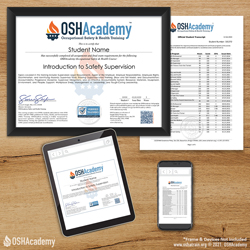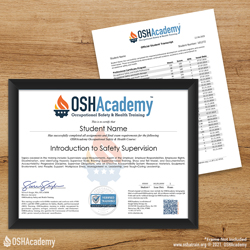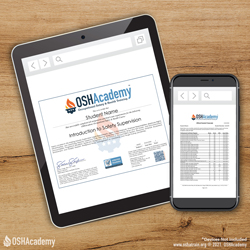Introduction
This course is an introduction to the basic elements of effective safety supervision with emphasis in five key supervisor responsibilities: providing oversight, training, accountability, resources, and psychosocial supports.
Course Objectives
| ID | Objective |
|---|---|
| TO 1.0 | Achieve a minimum score of 70% on the final course assessment. |
| LO 1.1.1 | List and describe five key elements in the "Five Star" safety supervision model. |
| LO 1.1.2 | Discuss basic supervisor legal responsibilities as "agents of the employer" described in the General Duty Clause of the OSHA Act of 1970. |
| LO 1.1.3 | Discuss basic employee-protected rights and entitlements provided by the OSHA Act of 1970. |
| LO 1.1.4 | Describe employee discrimination protections and the four broad categories of employee-protected activities. |
| LO 1.1.5 | List and describe each of the five general workplace hazard categories. (MEEPS) |
| LO 1.1.6 | Discuss the four primary tools supervisors can use to identify and correct hazards in the workplace. |
| LO 1.1.7 | Describe the concepts of "injury analysis," "surface-cause analysis," and "root-cause analysis, and give examples of each concept. |
| LO 1.1.8 | Describe and give examples of each of the hazard/exposure control methods listed in the "Hierarchy of Controls" strategy. |
| LO 1.2.1 | Discuss supervisor responsibilities to provide safety training. |
| LO 1.2.2 | Describe the requirements, best practices, and steps in the On-The-Job training (OJT) process. |
| LO 1.2.3 | Define and give examples of how effective safety accountability is demonstrated. |
| LO 1.2.4 | List and describe the basic elements of an effective safety accountability system. |
| LO 1.2.5 | List and give examples of the four categories of physical resources supervisors are to provide. |
| LO 1.2.6 | Describe and give examples of how supervisors can provide psychosocial support. |
| LO 1.2.7 | Define, contrast, and give examples of the application of safety management and leadership. |
Key: Terminal Objective (TO), Learning Objective (LO)



